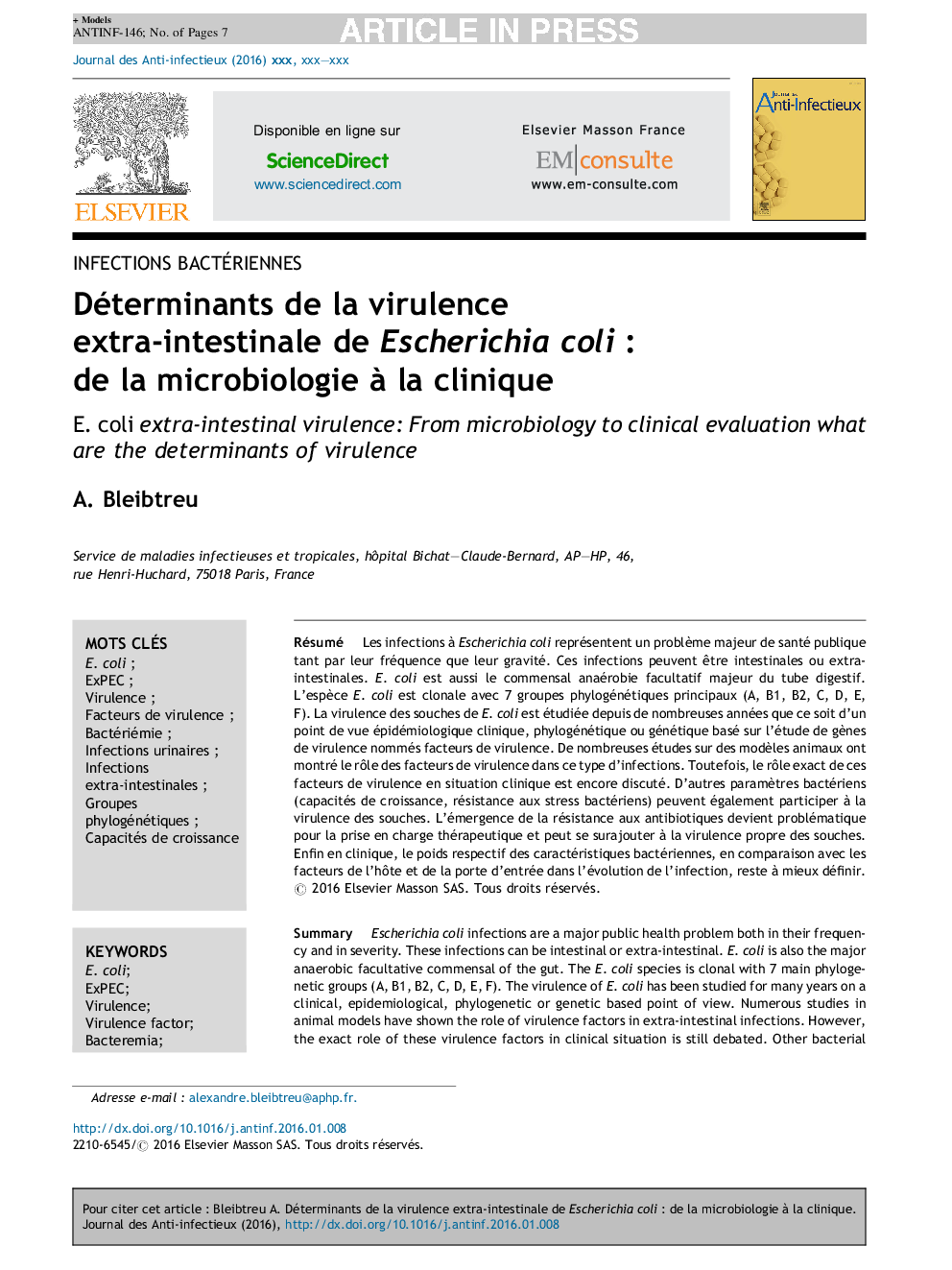| Article ID | Journal | Published Year | Pages | File Type |
|---|---|---|---|---|
| 3405329 | Journal des Anti-infectieux | 2016 | 7 Pages |
Abstract
Escherichia coli infections are a major public health problem both in their frequency and in severity. These infections can be intestinal or extra-intestinal. E. coli is also the major anaerobic facultative commensal of the gut. The E. coli species is clonal with 7 main phylogenetic groups (A, B1, B2, C, D, E, F). The virulence of E. coli has been studied for many years on a clinical, epidemiological, phylogenetic or genetic based point of view. Numerous studies in animal models have shown the role of virulence factors in extra-intestinal infections. However, the exact role of these virulence factors in clinical situation is still debated. Other bacterial parameters (growth capabilities, bacterial stress resistance) may also contribute to the virulence of the strains. The emergence of antibiotic resistance becomes problematic for the treatment and can be superimposed to the strain virulence. Finally, in the clinical situation the weight of bacterial characteristics, in comparison with host factors and portal of entry, remains to be better define.
Keywords
Related Topics
Health Sciences
Medicine and Dentistry
Infectious Diseases
Authors
A. Bleibtreu,
